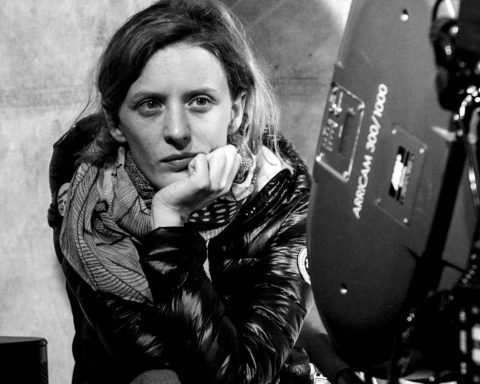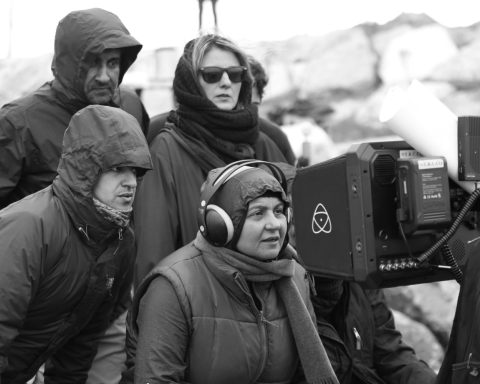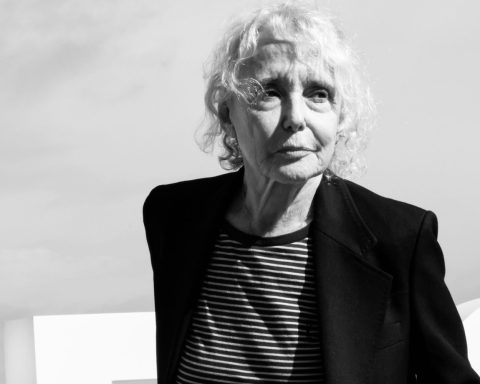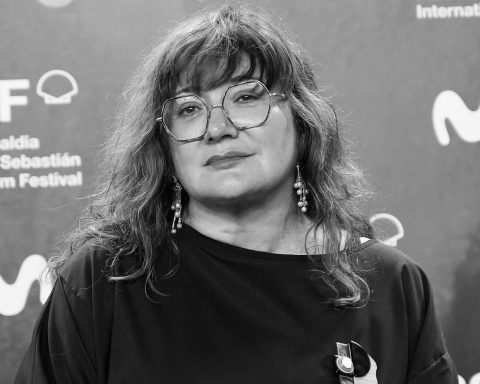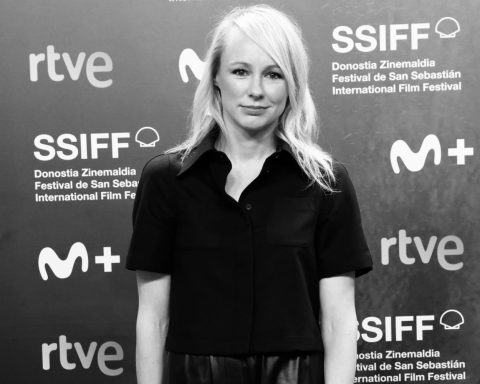Mary Laws wrote on the first three seasons of AMC’s “Preacher” and co-wrote the screenplay for Nicolas Winding Refn’s “The Neon Demon.” Laws is also known for her plays “Bird Fire Fly,” “Blueberry Toast” (Yale School of Drama) and “Wonderful,” among others. Taylor Schilling is known for her role as Piper Chapman on the Netflix original comedy-drama series “Orange Is the New Black,” for which she received a nomination for the Primetime Emmy Award for Outstanding Lead Actress in a Comedy Series and two Golden Globe Award nominations for Best Actress – Television Series Musical or Comedy and Best Actress – Television Series Drama. She made her film debut in the 2007 drama “Dark Matter” by Chen Shi-zheng. Schilling also starred the NBC medical drama “Mercy.” Her other films include Paul Johansson’s “Atlas Shrugged: Part I,” “The Lucky One” by Scott Hicks, “Take Me” by Pat Healy and Lennart Ruff’s “The Titan.”
As part of a 2020 New York Comic Con round table, Tara Karajica talks to Mary Laws and Taylor Schilling about the Hulu horror anthology series, “Monsterland,” created by, written and executive produced by Laws in which, through encounters with Gothic beasts, including fallen angels and werewolves, broken people are driven to desperate acts in an attempt to repair their lives, ultimately showing there is a thin line between man and beast.
How did you join this project?
Mary Laws: I was extremely inspired by Nathan Bullingrud’s book, which this series is partially based on. I absolutely loved how human the stories in his book were and how they grappled with really broken people in a genre space which I thought was very unique to the horror genre; it wasn’t a sort of jump scares and cheap thrills type of horror. It was really about the human experience and I thought that that was a ground for exploring a lot of really right material.
Taylor Schilling: On a similar level, I felt really intrigued by the notion of externalizing inner demons into external demons. I liked the idea of making physical the monsters we feel inside and that, for me, was very compelling.
There is a man in the original story and you gender swapped it. What was the thought behind gender swapping this story?
M.L.: I wanted to tell a story about lesbians because I am one.
In Taylor’s episode, you have dead makeup. Mary, can you talk about the different stages of the makeup and what you decided to do? And Taylor, can you talk about having it applied?
M.L.: It was really interesting. I’ve never done anything like this, which was fun in and out of itself, just thinking: “Here’s an episode of a show where I can go and pretend.” I did a movie once where this actor was in a chair for hours and I was like: “That would be really interesting, kind of fun” and that was actually a draw.
T.S.: I had a panic attack when they started to put it on my face at the end. So that woman at the very end of that episode when the character has gone full zombie mode isn’t me. They had a really good guy, who I had seen around New York a lot, doing visual effects and I started at the very beginning, asking if we could expand the nose holes and he was just like: “I’ll walk you down to the P.A.” and was like: “She’s going to tap out! We’ve got to tap her out! We’ve got to get the stand-in here.” So, they did; they brought her in and took it off my face and edited into it. I think he’d had enough experience to know that my kind was going to have a panic attack. I learned a lot for my career moving forward. I know my limits thanks to Monsterland!
M.L.: You’re welcome! We worked with KNB who are pretty famous for doing The Walking Dead, but they’re absolutely fantastic monster creators and Jake Garber was our on-set monster-maker and I have to give some props and credit to our A.D. team also because there were so many different phases of Taylor’s incredible makeup. It was just an epic process to know at what phase we were because we obviously shot out of order. But it was definitely really extensive and every layer was a little bit more decayed than the one right before.
Beyond the horror, what would you say is a common thread in the stories from your perspective?
M.L.: I’m particularly interested in exploring why people do some of the more monstruous things they do. I think that we live in a very polarized country right now; there’s not a lot of room for nuance within a person. You’re sort of judged for the worst bad thing you’ve ever done and I think that’s dangerous and I wanted to tell stories that asked the why, that explored the background, the makeup of a person, the trauma that someone had been through, their past experiences and sort of unfold why people make the kinds of desperate awful choices that they do. So, trauma’s, certainly, a theme that carries through all the episodes of what makes us the monster; it’s really something that all episodes are talking about.
Mary, how did you shape the character of Kate and Taylor, how did you prepare to play Kate?
M.L.: I did not write this episode; our wonderful writer, Emily Kaczmarek, wrote it. We did break the story as a writers’ room, though, and one thing that I think we were all really set on in terms of Taylor’s character, Kate, was that she was a well-rounded character and had a personality outside of her mental illness, which is something that I think is a pitfall that I see a lot of Hollywood stories that are discussing mental illness sort of fall into – that the character is their mental illness and nothing else. And so, it was really important to me and to all of the writers that Kate had a more three-dimensionality, which I hope came across from the script.
T.S.: Well, I thought it was a very sophisticated portrayal of what it feels like to be in a co-dependent space with another person and I was just really interested in exploring that dynamic and there is so much available on the page that it made the normal detective work of being an actor pretty straightforward.
You have such a great handle on the human aspect, but also the horror aspects. Are there writers or directors in horror that are your favorites and may have inspired you while creating the series?
M.L.: I hate my own answer to this – I love Roman Polanski and I think that his horror, particularly Rosemary’s Baby, but Repulsion is the one that I have always felt hugely, hugely inspired by and no matter what I do, every project I’ve worked on since I’ve seen it, I think of it when I’m writing at some point. I think that it’s an absolutely incredible portrayal of also perhaps mental illness, but just the internal experience. There are a million ways to break down that film, but the internal experience of a person reflected outwardly – kind of what Taylor was saying earlier – and it’s all done in a very, very compact pressure cooker and the imagery and the symbolism are so strong in that film. I think about it all the time, non-stop. I wish he didn’t do so many terrible things, but I think that as an artist, I go back to that film over and over and over again.
T.S.: Actually, Rosemary’s Baby was a movie that I saw when I was eleven, the same time I saw Annie Hall, within two days of each other. It just completely captured me and it informed my idea of New York City very heavily, but I’m not a huge horror person, so I kind of came at this from very much the point of view of the relationship and from my little corner of the sandbox.
You mentioned this episode had a pressure cooker feel to it and that is one of the more claustrophobic and unintentionally timely episodes. What was about trying to capture that claustrophobia within the canvas of horror that you found intriguing?
M.L.: My experience of having a sort of horrific life experience is that it does feel like a pressure cooker. I think moments of true horror can last a very, very small amount of time, but feel infinite. But, really, it’s all happening here [shows the head] and then, in the body and I think that probably that’s why horror does so well in that kind of pressure cooker environment. So many wonderful movies in the genre are in a room, in a basement, in a house because I think that there’s the struggle between the external and the body or the external. I think also perhaps another answer is that the anthology series is incredibly hard to produce and so it really made sense for us on a production level to have all our episodes in one space and I think that the genre lends itself well to that pressure cooker environment.
T.S.: I totally agree with you. I think that what is so exciting to play in these scenarios is the heightened reality of a crisis and that is deeply claustrophobic. It’s something that we can all relate to and that heightened experience of being alive is fun to play in and, I think, well-suited to a horror genre. We all felt like our lives are horror movies at certain points. So, it’s fun to play that way.
Photo credits: Hulu.
This interview/round table was conducted at the 2020 (virtual) New York Comic Con.



